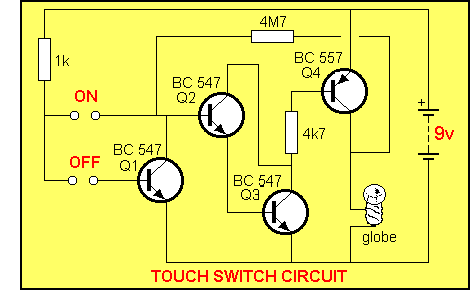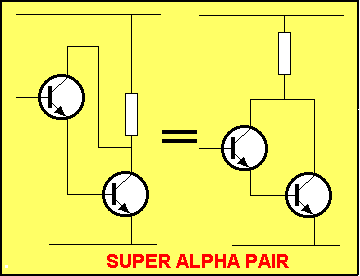TODO FIXME: fix javacript
function up1() {document.pic1.src="images/up1.gif" } function down1() {document.pic1.src="images/downQ151.gif" } function up2() {document.pic2.src="images/up1.gif" } function down2() {document.pic2.src="images/downQ152.gif" } function up3() {document.pic3.src="images/up1a.gif" } function down3() {document.pic3.src="images/downQ153.gif" } function up4() {document.pic4.src="images/up1a.gif" } function down4() {document.pic4.src="images/downQ154.gif" } function up5() {document.pic5.src="images/up1a.gif" } function down5() {document.pic5.src="images/downQ155.gif" } function up6() {document.pic6.src="images/up1a.gif" } function down6() {document.pic6.src="images/downQ156.gif" } function up7() {document.pic7.src="images/up1a.gif" } function down7() {document.pic7.src="images/downQ157.gif" } function up8() {document.pic8.src="images/up1a.gif" } function down8() {document.pic8.src="images/downQ158.gif" } function up9() {document.pic9.src="images/up1.gif" } function down9() {document.pic9.src="images/downQ159.gif" } <!-- if (document.images) { // Active Images img1on = new Image(); img1on.src = "images/sw-contacts-ON.gif"; img2on = new Image(); img2on.src = "images/sw-contacts-OFF.gif"; img3on = new Image(); img3on.src = "images/Touch Switch cct&fingerOFF.gif"; img1off = new Image(); img1off.src = "images/sw-contacts-ON.gif"; img2off = new Image(); img2off.src = "images/sw-contacts-OFF.gif"; img3off = new Image(); img3off.src = "images/Touch Switch cct&fingerON.gif"; } // Function to 'activate' images. function imgOn(imgName) { if (document.images) { document\[imgName\].src = eval(imgName + "on.src"); } } // Function to 'deactivate' images. function imgOff(imgName) { if (document.images) { document\[imgName\].src = eval(imgName + "off.src"); } } // -->
The circuit turns ON a lamp (or other device) when a very small current is delivered to the input. In this case the current is provided by a finger, touching two TOUCH-PADS. The circuit also has another feature. It will “latch-on” and the globe will remain illuminated. A second touch pad is provided to turn the circuit off.

Mouse-
over:


to see
circuit
work
The TOUCH-PADS deliver current from the power rail to the input of the circuit, via a moist finger. The finger acts as a very high resistance but it will allow enough current to flow to turn the circuit ON.
As the circuit turns ON, voltage is developed across the globe and this is passed to the “front-end” via a 4M7 FEEDBACK resistor. This resistor effectively takes the place of your finger so that when the finger is removed, the circuit will stay active.
To turn the circuit OFF, Q1 is made active by the OFF touch-pad and this transistor removes the “turn-on” voltage to transistors Q2 and Q3. This turns off the output transistor Q4 and the voltage across the globe reduces. When the finger is removed from the OFF pads, the circuit has completely turned off and absolutely no current will be drawn.
The only current taken when the circuit is off is called LEAKAGE CURRENT and this will be LESS than 1uA and will flow through the junctions of the BC 557 when the transistor is OFF.
This circuit is a vast improvement over the previous design and it can be used for all types of applications where an electronic “latch” is required.
THE SUPER-ALPHA PAIR
Transistors Q2 and Q3 are connected together in a very special way. They form a single transistor with a very high gain and very high input impedance.

The diagrams above show two transistors connected as a SUPER ALPHA PAIR. The first diagram is taken directly from the TOUCH SWITCH circuit and the second is re-arranged slightly to show the standard SUPER ALPHA layout.
You can think of the two transistors as a single transistor. They behave exactly like a single transistor except the only difference is the turn-on voltage. It must be 0.6v + 0.6v = 1.2v as the two base-emitter junctions are “on top of each other.”
The other important feature of this arrangement is the high input impedance.
Normally, the input impedance of a common-emitter transistor is about 2k to 5k. When two transistors are connected in a super-alpha arrangement, the input impedance is 200k to 500k.
What does this mean?
The best way to describe this feature is via a TIME DELAY. When a capacitor is charging, current (energy) is being fed to it via a resistor. If we place a monitoring device across the capacitor, some of the energy from the resistor will flow into the monitoring device and the capacitor will not charge at the same rate (It will take longer to charge).
If we need to monitor the voltage across the capacitor (to detect when it reaches a certain value - to end a time-delay, for example) we need to place a very light load across the capacitor.
The super-alpha arrangement is ideal for this. It imposes a very light lad on the time-delay circuit. (You will need to place a resistor between the time-delay circuit and the super-alpha transistor so that the capacitor will charge above 1.2v (the base-emitter junction voltage of the super-alpha transistor).
The high input impedance of the super-alpha transistor is needed so that the circuit will detect a finger across two touch plates.
A finger pressing on two plates presents a resistance to the circuit and will allow current to flow. Depending on the moisture content and pressure applied, the resistance can be as low as 30k or as high as 1M. To get reliable operation, the circuit must be able to detect a high resistance and thus a very high gain stage is required.
Transistors Q2 and Q3 form a single stage with a gain of at least 100 x 100 = 10,000 and thus an input current of as little as 1uA (1 micro-amp) will allow a current as high as 10mA to flow in the collector-emitter circuit.
The animation below shows exactly how the super-alpha arrangement works. As soon as the voltage on the base rises above 1.2v, the “top” transistor will allow current to flow into the base. The transistor is a CURRENT AMPLIFIER and it allows about 100 times this current to flow in its collector-emitter circuit.
At the beginning of the cycle, the lower transistor “sees” the upper transistor as a very high resistance and it is not turned on.
When the “upper” transistor is turned on, the lower transistor sees it as a low value resistor (a resistance of about 30k to 100k) and it is turned ON.
The circuit sees the lower transistor as a very low resistance (about 1k) and if the supply voltage is 9v, the current flow through the collector-emitter circuit would be 9mA. But a 4k7 resistor has been included in this circuit to limit the current less than 2mA.
This current is sufficient to drive the output transistor into full saturation to turn ON the lamp.
Quick Links
Legal Stuff
Social Media


